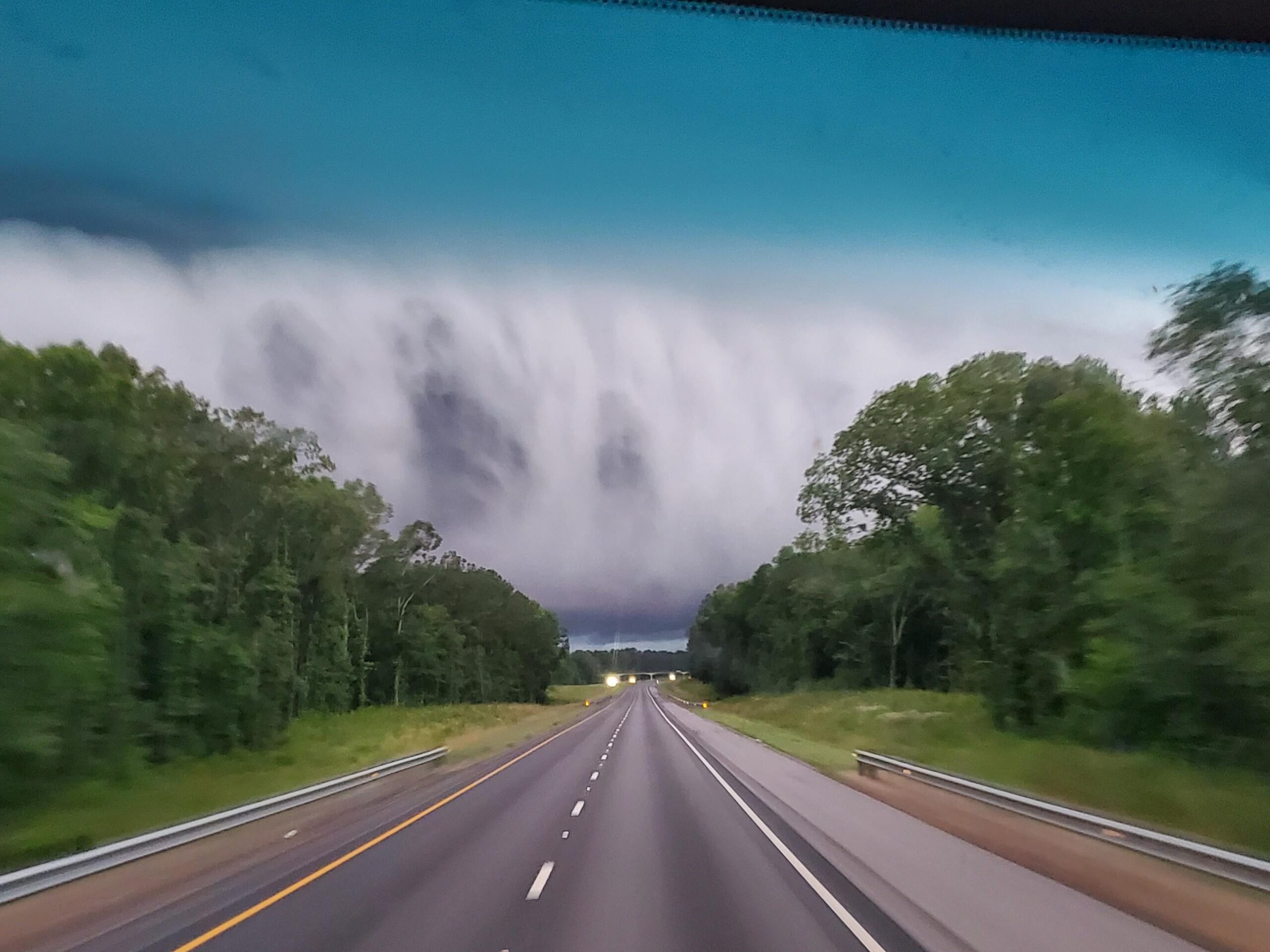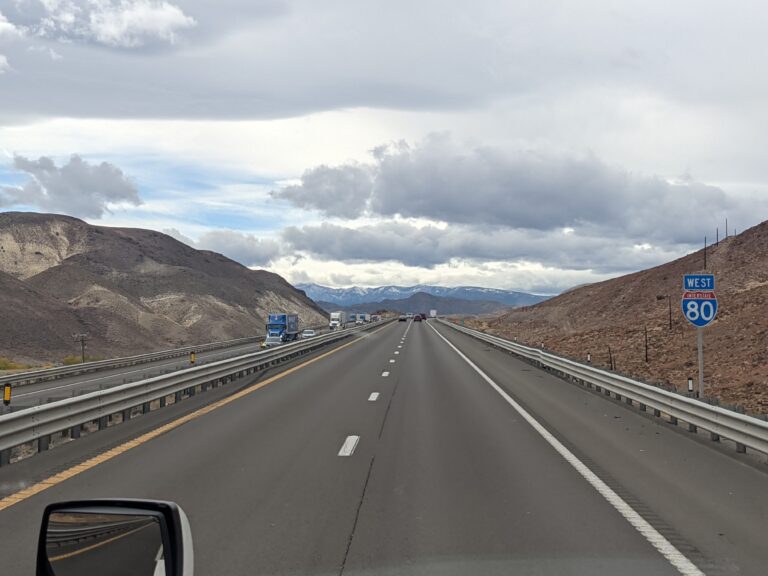Navigating Different Types of Weather While Truck Driving: Tips for Safely Handling Rain, Snow, Heat and Wind
One topic that does not get talked about enough in trucking is having to deal with changing weather on a day-to-day basis while you are barreling down the highway at 70MPH surrounded by traffic and hauling up to 80,000 pounds.
The Different Types of Weather
Rain is the most common weather occurrence you will deal with as a truck driver. When it is pouring rain, this can cause unsafe driving conditions not only for yourself but for the vehicles around you. One way this happens is it decreases driving visibility. If it is raining hard enough such as a downpour it can make you blind while attempting to look through your windshield. In such instances it is best to slow down as this decreases the force of the rain hitting your windshield and should allow you to see a little better.
Slippery Roads
The other reason while driving in rain is so dangerous is it makes the road slippery. This is bad news if you have to make a quick course correction with the steering wheel or hit the brakes all of the sudden to slow down. A wet road can cause any steering correction to be cancelled out by not having enough traction on the pavement for your tires due to the water. The best way to help prevent getting into an accident in the rain is to slow down. Speeding in the rain is asking for trouble especially in a large semi-tractor with a trailer attached. By the simple act of slowing down you can avoid situations and will allow you the time to react to road hazards. Keeping a proper following distance becomes much more important also while driving on wet roads. Because if you have to hit the brakes or turn the wheel sharply to avoid an accident your truck and trailer are going to need a lot more room to do so safely.
Driving in the Heat
If you are driving and its hot outside, you may think to yourself well I will just crank up the AC and be fine. While this works to keep your body cool. Your truck is still exposed to the hot temperatures from the air and scorching pavement. In the American Southwest for instance, it gets hot, really hot. This can help to make your tires overheat. Especially if you are going fast. With the combination of speed and driving on hot asphalt it can be a recipe for disaster and increase the chances of having a tire overheat and blow out. The best way to help avoid this from happening is to keep your tires inflated properly and to inspect them each time you stop. If a tire looks like it is on its last leg, and you are cruising along a 115-degree highway. The chances are it is not going to make it. Replace your tires before they become a road hazard. A tire on its last one thousand miles is not going to fare very well on a blistering hot highway under the weight of a full load.
Let’s Talk About Snow
Driving in the snow changes everything while you drive. First off it can reduce your visibility if it is snowing hard. Also, it can make the roads very slippery and make your truck and trailer slide off the road. The best advice for driving in the snow is to slow down. Also, you are going to want to keep a maximum following distance from the vehicle in front of you to give enough time to react to come to a stop if required.
Driving Over Mountains in the Snow
If you are driving through mountain highways in the snow you should pay close attention to the road signs informing commercial trucks if tire chains are required. You should always carry a set of tire chains in case you are required by law to chain up especially during the Spring, Fall and Winter months. Each state has its own laws as to how many tire chains you need and what wheels to place them on. When are your dealing with elevation changes driving in the snow can be more dangerous by causing your truck and trailer to lose traction more easily versus if you were driving on flat land.
Driving in High Winds
Every year a lot of semi-trucks get blown over due to driving in high winds. There are certain areas of the country that are notorious for blowing over trucks when the wind kicks up. No area is immune but off of I-80 in Wyoming is one of the more common highways where a lot of trucks are blown over. It is common for Wyoming to shut down parts of i-80 in strong winds. Be on the lookout for flashing signs indicating that the highway may be closed ahead.
The type of trailer you are hauling has an enormous impact on how much the wind will affect your control on the road. If you are hauling a dry-van or reefer trailer expect to be pushed around quite a bit by the wind. These large flat boxes act like sails in crosswinds, and these are the type of trailers that will push a truck over on its side the most. High and potentially dangerous winds can strike you anywhere but out west and driving over waterways such as high bridges are some of the more common areas you may experience them. If the wind is pushing your truck around it is best to slow down to a safer speed. If it still pushing, you around driving slower, and it feels unsafe pull over as soon as it is safe to do so without obstructing the highway and wait until the winds die down.
Tornados and Hurricanes
How can we talk about weather events on the road without bringing up two of the most destructive storms known to man? As a professional truck driver, you should never find yourself driving through a hurricane. However, it is common to be caught driving on the outer weather system which usually extends many hundreds of miles but are still safe to drive through. Usually, you are going to experience a lot of rain and wind gusts should you decide to skirt around a large storm like a hurricane. Of course, you never want to travel in the patch of a Hurricane under no circumstances. If you find yourself caught in a hurricane park the truck and seek safe shelter.
Tornados may be the most terrifying type of weather event a trucker may come across if they are unlucky enough. It is important to keep storm alerts active on your phone so if a tornado warning comes across the area you are driving through you get the alert as soon as possible. If you see a tornado, immediately do what you can to avoid its path. If this is not possible you will want to park the truck and stay away from the windows.
Planning for Severe Weather
Aside from erratic drivers and mechanical failures, weather is the wild card factor in trucking and can change in an instant and wreak havoc on your trip. Before starting your trip every day, you will want to take a look at the weather report for the area you will be traversing. This will give you some idea if you need to make plans for adverse weather conditions and adjust your routing as required. The only other advice I can give you when driving in weather is to stay focused and drive distracted free. Turn off the radio, keep both hands on the wheel and slow down if you find yourself stuck in a storm. Stay safe out their driver.



